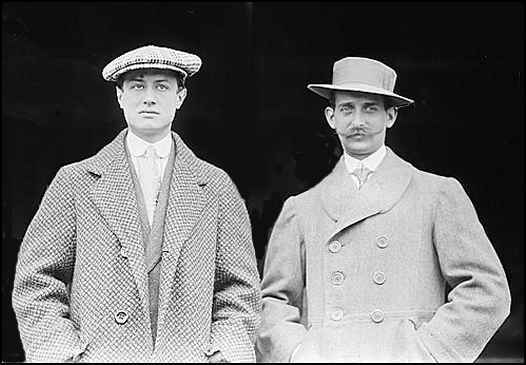
1885-abt 1920's |
 |
|
Library of Congress Collection, 7-3-11 |
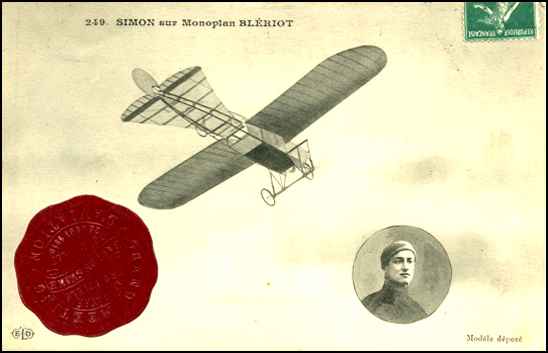 |
|
Collection of Dave Lam, 10-10-05 |
|
By email from Dave Lam, 1-25-03 |
|
A total of $72,300 in prize money was a stake--of which $10,000 was earmarked for the winner of a race around the Statue of Liberty. Another $1,000 was thoughtfully set aside "to be distributed among the mechanics of the aviators as a recognition of their services." Top billing, however, was given to the second contest for the Gordon Bennett trophy--and the first on American soil. American hopes were pinned on an all-star Wright delegation: Walter Brookins, selected to pilot the dark-horse Model R racer, of Orville's creation --a junior-size "headless" machine, lacking a front elevator and with a 21-foot wing span and an eight-cylinder, 60-hp engine; Ralph Johnstone, a specialist in high flying; his rival in altitude, Arch Hoxsey (who had taken up former President Theodore Roosevelt at St. Louis on October 11); and either Phillip O. Parmalee or J. Clifford Turpin. In the Curtiss camp were Charles F. Willard; James C. (Bud) Mars, a former balloonist and parachute jumber; J.A.D. McCurdy, charter member of the Aerial Experiment Association; and Eugene Burton Ely, whose later exploits were to earn him a place in America's Aviation Hall of Fame. Charles K. Hamilton entered his Hamiltonian--a biplane modeled on the Curtiss and powered by an eight-cylinder, 110-hp motorcar engine designed by Walter Christie. Captain Thomas Baldwin appeared with the Red Devil, constructed on the same order; and Clifford Harmon cast his lot with a Henry Farman. Flying Blériots were John B. Moisant, who in August had made the front pages by carrying his mechanic and a yowling kitten, Mademoiselle Parce, from Parks to London in just under three weeks; and J. Armstrong Drexel, fresh from European successes. Todd Shriver, Curtiss's former mechanic, was named pilot of a confection known as the Howard-Dietz biplane. And millionaire Harry S. Harkness, who had taken his license just three days before the meet, was enjoying the distinction of being the only man in America to own an Antoinette. (continued) France entered Alfred Leblanc, Count Jacques de Lesseps, Emile Aubrun, René Simon and René Barriere, all flying Blériots. The Story of the Early Birds by Henry Serrano Villard (page 107) |
|
For over a week, spectators turned out at City Park to watch aviators perform stunts and attempt to break altitude, speed, and duration records. In a Blériot monoplane French aviator René Simon broke the world's record for one mile in 57 seconds. In a land-air race with an automobile, Moisant came in a close second. (continued) |
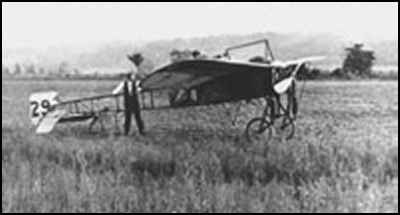 |
|
South Bend, Indiana, 1911 |
|
|
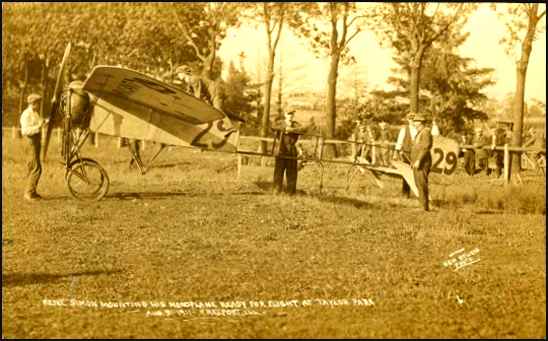 |
AUG. 31-1911---- FREEPORT, ILL, ---- Collection of Jerry Blanchard, 9-16-07 |
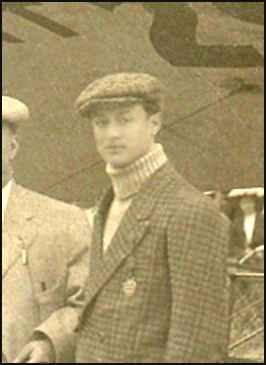 |
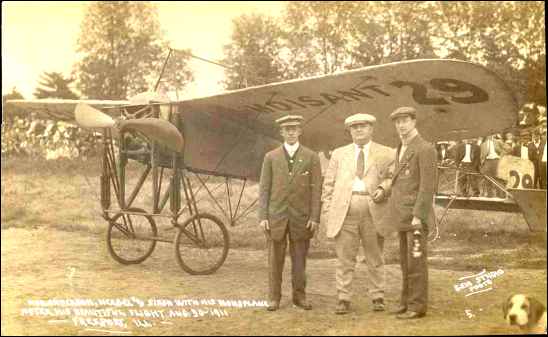 |
AFTER HIS BEAUTIFUL FLIGHT AUG. 30-1911 ---- FREEPORT, ILL, ---- Collection of Jerry Blanchard, 9-14-07 |
 |
|
Sitting, l-r: Joseph Seymour, John Frisbie, Rene Simon ('flying fool'), Edmund Audemars, Rene Barrier, Roland Garros, Peter Young (manager), and Charles Hamilton (standing) From AIRSHOW, Houston, Texas 1911 By permission of Story Sloane, 10-12-09 |
|
The Story of the Early Birds by Henry Serrano Villard (page 115) |
 |
|
Edmond Audemars - John Moissant Emile Aubrun - René Simon Library of Congress, 7-13-08 |
|
|
|
Stephenson Co IL "Aviation in Freeport" |
|
|
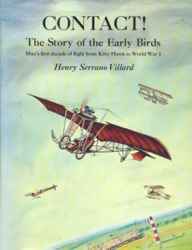 |
|
The Story of the Early Birds Man's first decade of flight from Kitty Hawk to World War I Henry Serrano Villard Foreward by S. PAUL JOHNSTON Director, National Air and Space Museum Smithsonian Institution In today's age of space probes and moon rockets, it is hard to believe that the aeroplane is scarcely sixty years old. Here Henry Serrano Villard, who knew many of the pioneer pilots and flew in their "bits of stick and string,"re-creates the romantic era when man first dared the miracle of flight. His anecdotal account, illustrated with 125 photographs--many from his personal album--covers the decade and a half of aeronautical history from the Wright brothers' exploits at Kitty Hawk to the outbreak of World War I. I had the pleasure of knowing Henry for several years before his death. I found him to be a delightful companion and a remarkable source of information on the entire field of aviation. I can recommend his book, without hesitation, as an essential resource for anyone interested in the history of early aviation.. |
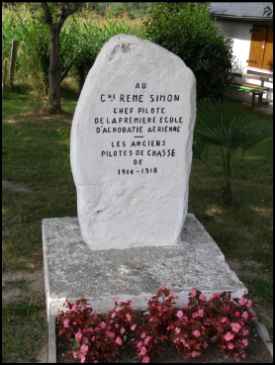 |
|
Les anciens pilotes de chasse 1914-1918. AEROSTELES |
|
In a new book CHASING ICARUS: THE SEVENTEEN DAYS IN 1910 THAT FOREVER CHANGED
AMERICAN by Gavin Mortimer, it's stated on page 263 that Rene Simon was killed
in a flying accident sometime in the 1920s. It doesn't say what year, but I'm
still trying to find that out. Pete Jones. 5-25-11 If you have any information on this Early Flier, please contact me. E-mail to Ralph Cooper Back 

|